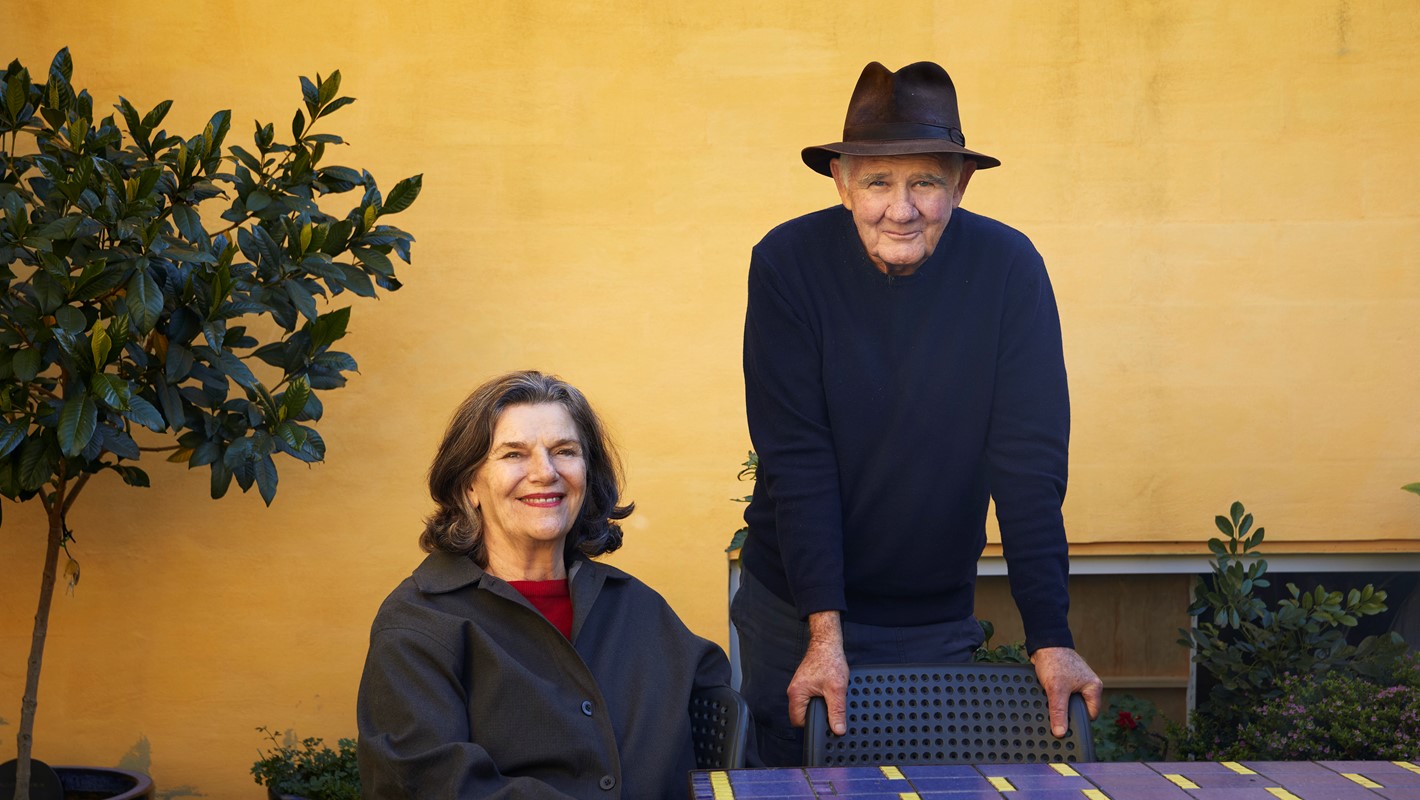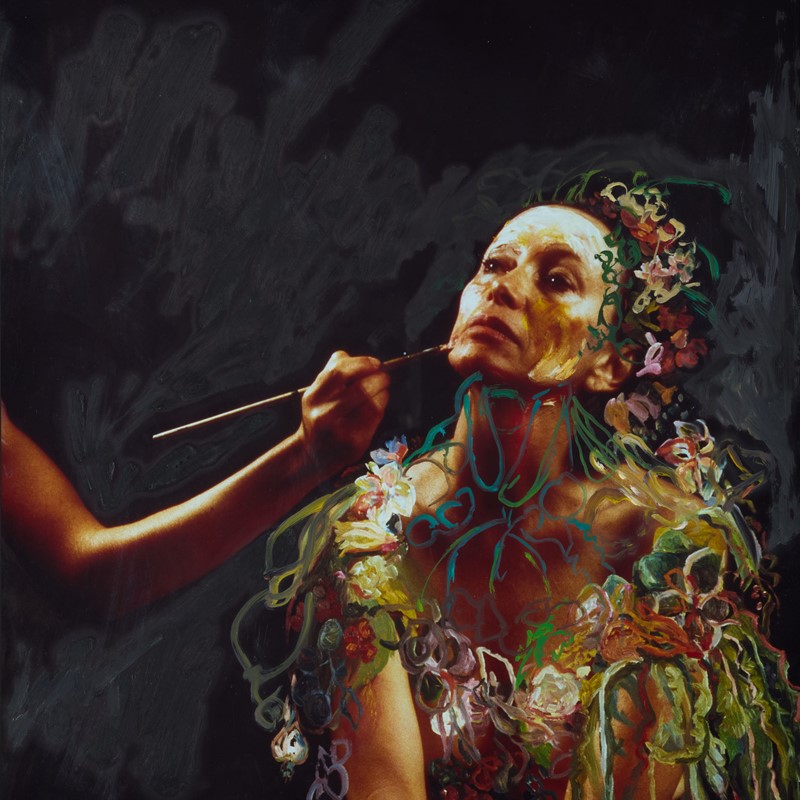Q&A: Eveline Kotai and Giles Hohnen at Sydney Contemporary

We are delighted to participate again at Sydney Contemporary, Australia's leading international art fair.
This year we present new works of significant scale by Eveline Kotai and Giles Hohnen, marking the first time in their careers that the partners in life will exhibit side-by-side. Two of Western Australia's most significant and loved artists, Eveline Kotai and Giles Hohnen each have art careers spanning more than 50 years, and continue to maintain a dynamic arts practice.
Ahead of Sydney Contemporary, we sat down for a chat with the artists to find out more about the new works they're presenting, how the artists work together from their home studio in White Gum Valley and their enduring association with Art Collective WA through its ten year history.
What are you looking forward to the most about Sydney Contemporary?
E: As an artist it’s always exciting to have a fresh audience and a large audience. There’s more likely to be people there who really get the work and are keen to engage with it. And it’s great to be in a setting among your contemporaries from all over the country.
You work in separate studios from your home in White Gum Valley. Can you tell us what that looks like day-to-day? Is there a specific routine you adhere to?
G: On a good day we say goodbye at about 10 or 11 o’clock. She goes this way to her studio, I go that way to mine. But we work completely differently. She works in a complete mess and makes this very elegant work, and I work in a completely tidy space and make fairly wild paintings. I don’t like deadlines, Eveline can’t work without them.
Obviously you work in separate spaces, but is there much interaction or collaboration between you when you’re making work?
E: Occasionally. We meet for lunch; the first person to get hungry starts lunch and then we work through to news time, sometimes with a nap in between. We’re living the dream really. It took a long time to get there though!
Eveline, tell me about the works you’ll be exhibiting at Sydney Contemporary?
E: I'm doing a series of white stitched collages, mainly because I was thinking of the space and thinking of them sitting next to Giles’ strong colors. I love making them because I find them just so meditative. So I’ve got five large white works that have little hints of past edges, they’re actually the edges of previous paintings. There’s little remnants of something that’s already been. It’s a bit hard to describe!
How did your fascination with stitched collage-style paintings evolve? Were you always interested in this medium?
E: Earlier in my career I was passionate about drawing. I always believe you start from your doorstep – rather than having a big concept or idea, you start with something that is close to you. So I started doing interiors and exteriors, mainly drawing, not so much painting. That was when we were living in Margaret River. I just loved living there and I was really influenced by the natural environment and the changing of the seasons.
Then we moved to Fremantle in 1990 and I was no longer surrounded by that, so the urban environment found its way into my work. I started playing with the idea of, almost like a quilt. Like when you look at a cityscape and there’s a red square here and a white square here, and if you flatten that, it’s totally random. That’s how the stitched collages started to evolve.
And Giles tell us what you’ll be presenting at Sydney Contemporary?
G: It’s a continuation of the non-figurative non-representational work that I’ve been doing for the last six years, I guess. It’s intuitive and unplanned. There’s no preliminary sketching, it’s purely immediate and responsive.
Your practice has seen various iterations from abstraction to more landscape-based work. How did you get to where you are today?
G: My work has been through various stages. I was always a weekend painter when I was running my business. My first exhibition was completely non-representational; it was about as abstract as you can get. It was basically colour-field.
After moving to the country it became landscape based; sort of a colour-based abstraction of landscape. And then over the years a lot of it became closer to design work and geometry and so on. But then about six years ago I made a conscious effort to go back again and break loose. The last exhibition was called Untethered for that reason. It was quite a jump, but it’s been really good fun as well.
There is a great sense of joy and playfulness in your paintings. Is this something you aspire to in your work?
G: Yeah absolutely, I want my paintings to bring people joy and give them a lift. Because there’s so much stuff that brings you down. We need more of that and I think Eveline’s in a way do the same, in a different way. I was having a down day once and my son Harry said to me, “Just remember how you felt the day you walked into the state gallery and saw the Derain and Kandinsky side by side.” I was blown away - it was so moving. The energy that was contained in those paintings was over 100 years old but they were still giving so much joy.
Giles, what is it you admire about Eveline’s practice?
G: It’s constantly surprising and I just love what comes out at the end of it really. I can’t imagine a life where I didn’t like her work! That would be horrendous. There’s a consistency; she’s always exploring and experimenting. It’s a constant surprise and a joyful one.
Eveline, what is it you admire about Giles’ practice?
E: Giles was a bit of a legend at art school but I only knew him from a distance and then he went overseas. I was married to Ben Joel first and he would say, “Never underestimate that man.” I always loved his work. He was always able to get the essence of things, and always had a strong aesthetic. He probably taught me how to look at landscape as well. And I appreciate the honesty and integrity of his work.
It’s the 10th anniversary of Art Collective WA this year. Tell us about your involvement with the Collective over the years?
E: We’ve been involved since the very beginning ten years ago, around the time when five commercial galleries closed at once and the Collective started. It’s been really different to other galleries, it’s easy going and there’s a real sense of community.
G: The strength of it for me is trust. The gallery-artist relationship historically is always a tough one, but it doesn’t seem to exist at Art Collective. For me, it’s the perfect life. When the paintings go out the door, somebody else takes care of that. And to me, that is heaven. It’s complete, mutual trust.
Find us at Sydney Contemporary Art Fair from 7-10 September in the main hall at Booth G08, and if you can't make it in person contact us for a list of works.

